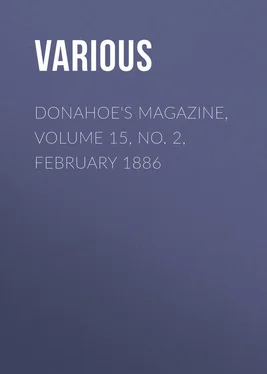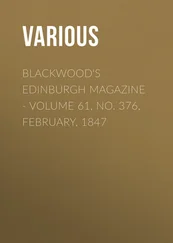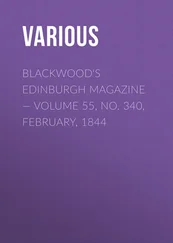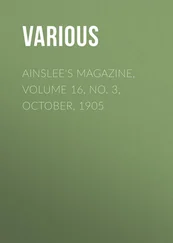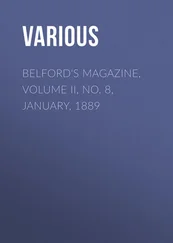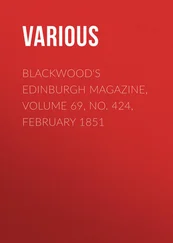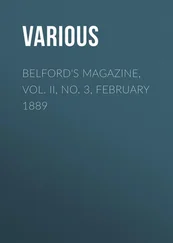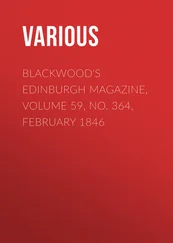Various - Donahoe's Magazine, Volume 15, No. 2, February 1886
Здесь есть возможность читать онлайн «Various - Donahoe's Magazine, Volume 15, No. 2, February 1886» — ознакомительный отрывок электронной книги совершенно бесплатно, а после прочтения отрывка купить полную версию. В некоторых случаях можно слушать аудио, скачать через торрент в формате fb2 и присутствует краткое содержание. Издательство: Иностранный паблик, Жанр: foreign_edu, periodic, на английском языке. Описание произведения, (предисловие) а так же отзывы посетителей доступны на портале библиотеки ЛибКат.
- Название:Donahoe's Magazine, Volume 15, No. 2, February 1886
- Автор:
- Издательство:Иностранный паблик
- Жанр:
- Год:неизвестен
- ISBN:нет данных
- Рейтинг книги:4 / 5. Голосов: 1
-
Избранное:Добавить в избранное
- Отзывы:
-
Ваша оценка:
- 80
- 1
- 2
- 3
- 4
- 5
Donahoe's Magazine, Volume 15, No. 2, February 1886: краткое содержание, описание и аннотация
Предлагаем к чтению аннотацию, описание, краткое содержание или предисловие (зависит от того, что написал сам автор книги «Donahoe's Magazine, Volume 15, No. 2, February 1886»). Если вы не нашли необходимую информацию о книге — напишите в комментариях, мы постараемся отыскать её.
Donahoe's Magazine, Volume 15, No. 2, February 1886 — читать онлайн ознакомительный отрывок
Ниже представлен текст книги, разбитый по страницам. Система сохранения места последней прочитанной страницы, позволяет с удобством читать онлайн бесплатно книгу «Donahoe's Magazine, Volume 15, No. 2, February 1886», без необходимости каждый раз заново искать на чём Вы остановились. Поставьте закладку, и сможете в любой момент перейти на страницу, на которой закончили чтение.
Интервал:
Закладка:
Various
Donahoe's Magazine, Volume 15, No. 2, February 1886
The Columbian Abbey of Derry
One bright sunny day last summer I found myself in the city of Derry, with some hours to spare. I passed them in rambling aimlessly about whither fancy or accident led me,—now on the walls, endeavoring to recall the particulars of that siege so graphically described by Macaulay, now in the Protestant Cathedral musing on the proximity of luxuriously-cushioned pew and cold sepulchral monument along which the sun, streaming through the stained windows, threw a mellow glow that softened but did not remove the hideousness of the death's emblems on them—now wandering down the busy street and admiring the beauties of the Casino College, which, like the alien cathedral a little distance up, rejoices in the patronage of St. Columb and is built on the site of his old monastery. Here I lingered long, trying to picture to myself the olden glories of the spot on which I stood, for
"I do love these ancient ruins;
We never tread upon them
But we set our foot upon some reverend history;"
although here not an ivy-clasped gable, or even a mossy stone remains to claim the "passing tribute" of a sigh, or a vain regret for the golden days of our Irish Church. Yet its very barrenness of ruins made it dearer to my heart, for one never clings more fondly to the memory of a dear friend than when all mementoes of him are lost. As warned by the stroke of the town-clock, I hurried down to the station to be whirled away to Dublin, I thought that perhaps my fellow-readers of the Magazine would bear with me while I gossiped for half an hour on the story of this grand old monastery, the mother-house of Iona.
You know where Derry is, or if you don't your atlas will tell you, that it is away up in the north of Ireland, where, situated on the shores of the Lough Foyle, coiling its streets round the slopes of a hill till on the very summit they culminate in the cross-crowned tower of St. Columb's Cathedral, it lies in the midst of a beautiful country just like a cameo fallen into a basket of flowers. The houses cluster round the base of the hill on the land side, spread themselves in irregular masses over the adjoining level, or clamber up the opposite rise on the brow of which stands St. Eugene's Cathedral, yet unfinished, and the pile of turrets which constitute Magee College. A noble bridge spans the Foyle, and through a forest of shipmasts one may see on the other side the city rising up from the water, and stretching along the bending shore till it becomes lost in the villa-studded woods of Prehen.
The massive walls, half hidden by encroaching commerce, the grim-looking gates, and the old rusty cannon whose mouth thundered the "No" of the "Maiden City" to the rough advances of James, in 1689, give the city a mediæval air that well accords with its monastic origin. For, let her citizens gild the bitter pill as they may, the cradle of Derry—the Rochelle of Irish Protestantism—was rocked by monks—aye, by monks in as close communion with Rome as are the dread Jesuits to-day.
Fourteen hundred years ago the Foyle flowed on to mingle its waters with ocean as calmly as it does to-day, but its peaceful bosom reflected a far different scene. Then the fair, fresh face of nature was unsullied by the hand of man. "The tides flowed round the hill which was of an oval form, and rose 119 feet above the level of the sea, thus forming an island of about 200 acres." 1 1 Sampson.
A Daire or oak grove spread its leafy shade over the whole, and gave shelter to the red deer and an unceasing choir of little songsters. It was called in the language of the time "Daire-Calgachi." The first part of the name in the modern form of Derry, still remains—though now the stately rows of oak have given way to the streets of a busy city, and the smoke of numerous factories clouds the atmosphere.
One day, in the early part of 546, there visited the grove, in company with the local chieftain, a youth named Columba, a scion of the royal race of the O'Donnells. He was captivated by its beauty. It seemed the very spot for the monastery he was anxious to establish. He was only a deacon; but the fame of his sanctity had already filled the land, and the princes of his family were ever urging him to found a monastery whose monks, they hoped, would reflect his virtues and increase the faith and piety of their clan. This seemed the very spot for such an establishment. The neighborhood of the royal fortress of Aileach, that
"Sits evermore like a queen on her throne
And smiles on the valleys of green Innishowen,"
promised security; the river an unfailing supply of fish; the woods material to build with; and, better than all, the lord of the district was his cousin Ainmire, from whom Columba had only to ask to receive. He did ask the island for God, and his request was joyfully complied with.
It was just three years after the deacon-abbot of Monte Casino had passed to his reward, that the young Irish deacon began his monastery. To erect monastic buildings in those days was a work of very little labor. A wooden church, destined in the course of time to give place to a more durable edifice—the seat of a bishopric—was first erected. Then the cells of the monks were put up. They were of circular form and of the simplest construction. A stout post was firmly planted in what was to be the centre, and a number of slighter poles were then placed at equal distances round it. The interstices—space however having been left for a door—were filled up with willow or hazel saplings in the form of basketwork. From the outer poles rafters sprang to the centre-posts, and across them were laid rows of laths over which a fibry web of sod was thrown, and the whole thatched with straw or rushes. The inside of the wall was lined with moss—the outside plastered with soft clay. A rough wooden bed—and in the case of Columba himself and many of his monks—a stone pillow, a polaire or leathern satchel for holding books, a writing-desk and seat, formed the furniture of this rude cell, which was the ordinary dwelling of monk and student during the golden age of the Irish Church.
Only a few weeks elapsed from the time that the first tree was felled till the new community, or rather order, took up their abode in it, and the swelling strain of their vespers was borne down the Lough by the rippling breeze and echoed by the religious, whose convents, presided over by SS. Frigidian and Cardens sentinelled the mouth of the Lough at Moville and Coleraine. The habit of these monks—similar to that of Iona and Lindisfarne, consisted of " 2 2 Cardinal Moran "Irish Saints in G. Brit." p 121.
the cowl—of coarse texture, made of wool, retaining its natural color and the tunic, or under habit, which was also white. If the weather was particularly severe an amphibalus, or double mantle, was permitted. When engaged at work on the farm the brethern wore sandals which were not used within the monastery."
Though their time was mainly devoted to prayer, meditation and the various other religious exercises, yet their rule made them apply every spare moment to copying and illuminating MSS. or some other kind of manual or intellectual labor, according as their strength and talents permitted. By this, people were attracted to the spot. Houses sprang up in the neighborhood of the monastery, that continually increasing in number, at length grew into a city, just as from a similar monastic germ have sprung nearly all the great German cities.
Columba in the busy years that elapsed between 546 and his final departure from Ireland in 563, looked upon Derry as his home. It was his first and dearest monastery. It was in his own Tyrconnell, but a few miles from that home by Lough Gartan, where he first saw the light, and from his foster home amid the mountains of Kilmacrenan, that, rising with their green belts of trees and purple mantles of heather over the valleys, seemed like huge festoons hung from the blue-patched horizon.
Читать дальшеИнтервал:
Закладка:
Похожие книги на «Donahoe's Magazine, Volume 15, No. 2, February 1886»
Представляем Вашему вниманию похожие книги на «Donahoe's Magazine, Volume 15, No. 2, February 1886» списком для выбора. Мы отобрали схожую по названию и смыслу литературу в надежде предоставить читателям больше вариантов отыскать новые, интересные, ещё непрочитанные произведения.
Обсуждение, отзывы о книге «Donahoe's Magazine, Volume 15, No. 2, February 1886» и просто собственные мнения читателей. Оставьте ваши комментарии, напишите, что Вы думаете о произведении, его смысле или главных героях. Укажите что конкретно понравилось, а что нет, и почему Вы так считаете.
